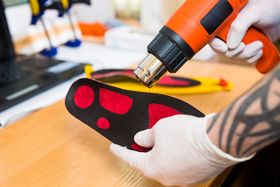Is Plantar Fibroma Surgery Even Worth It?
Published August 17, 2022

Plantar fibromas are not common. When they occur, they cause pain and discomfort in the foot arch, warranting treatment. Treating plantar fibroma is relatively easy. With non-conservative methods, you can easily enjoy pain relief. However, if the goal is to remove the lump, surgery may be necessary to remove the mass.
What Does Plantar Fibroma Surgery Entail?
Plantar fibroma surgery is the surgical removal of the fibrous mass in the foot arch. Generally, surgery is necessary when the fibrous nodule continues to grow, causes discomfort, or if all other treatment alternatives do not yield the desired result.
There are different methods for surgically removing plantar fibromas. The surgical approach depends on the severity of symptoms, the location of the mass, and the number of nodules. These are:
- Excision: There are two types. First, the local excision that involves the removal of the plantar fibroma alone, and second, the wide excision that removes the plantar fibroma and the area 2-3 millimeters around it.
- Fasciectomy: With fasciectomy, the entire plantar fascia ligament is removed. It could be either plantar fasciectomy or percutaneous fasciectomy. The difference is that percutaneous fasciectomy uses ultrasound to guide the removal of plantar fibroma.
What Is the Success Rate of Plantar Fibroma Surgery?
The success of plantar fibroma surgery depends on the type of surgery performed. Total plantar fasciectomy has the highest success rate with a 25% risk of recurrence. On the other hand, local excision of the primary lesion had a 100% risk of recurrence. The risk of recurrence is also higher with the presence of multiple nodules.
Plantar fibroma surgery also poses several other risks, including the risk of infection, swelling, and numbness on the bottom of the foot. There may also be scarring, where walking commences before the incision heals completely. Other complications include having chronic neuritis and a surgical wound that remains painful despite healing.
Is Plantar Fibroma Surgery Even Necessary?
It is worthwhile to note that fibroma surgery is not necessary most times. Surgery only becomes essential when the fibrous mass causes pain that is not amenable to other treatments. Surgery may also be important if the nodules multiply and continue to grow in size, making walking uncomfortable. Otherwise, there are alternative treatment methods you can consider.
Alternative Treatments for Plantar Fibroma
In place of surgery, there are several home remedies and conservative treatments for plantar fibroma. They include the use of NSAIDs, ice, elevation, massage, physical therapy, cortisone shots, orthotics, and the use of topical gels.
Use of NSAIDs
Non-steroidal anti-inflammatory drugs (NSAIDs) are a constant treatment for most kinds of foot pain. Ensure you use NSAIDs with a doctor’s prescription as overuse can come with side effects.
Ice
When plantar fibroma causes significant pain, ice can help reduce the pain and swelling. Ice packs can be applied directly to the foot arc for 15 mins per rep and repeated throughout the day.
Cortisone Injections
Injecting corticosteroids directly into the fibrous mass can bring immediate pain relief and control inflammation. While the shot will not stop the growth, it makes it easier to manage the discomfort and you can continue to walk with some ease.
Massage
There are specific massages for plantar fibroma. You can perform this yourself, or a physiotherapist can help you through the process.
Topical Gel
Research suggests that topical gels containing verapamil can inhibit the production of collagen fibers causing the fibrous mass to shrink in size. Thus, you can apply topical gels directly to the skin around the fibroma. Interestingly, many patients have also reported on the effective use of apple cider vinegar on plantar fibromas.
Orthotics
Orthotics help redistribute body weight around the foot. For plantar fibroma, custom orthotics are preferable as they help redistribute the body weight, reduce the pressure on the heel, and reduce tension in the plantar fascia. The insoles may also possess proper cushioning that guarantees greater comfort and support.
Physical Therapy
The mainstay of physical therapy management of plantar fibroma is exercise. Combining stretches and strengthening exercises will help to limit inflammation, and increase foot circulation thereby promoting healing, and stimulating the growth of new cells.
Ask Your Doctor
Plantar fibromas are rare, but when they occur, they will not go away without treatment. Treatment begins with home remedies like ice and elevation, and continues with non-conservative treatment like NSAIDs, corticosteroid injections, topical gels, orthotics, massage, and physiotherapy.
Only when these fail can you consider plantar fibroma surgery a worthy alternative. Ensure you seek medical advice before deciding on a course of action.








